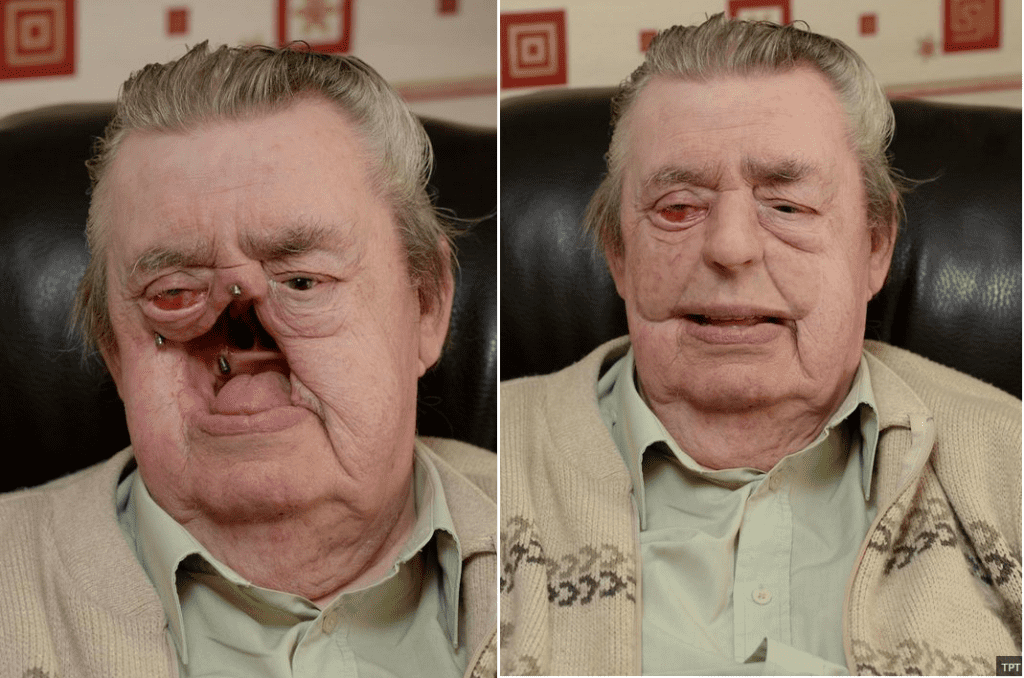Since 1990, Keith Londsdale went through no less than 45 different surgical procedures to remove basal cell carcinoma tumors, one of the most common skin cancers. The man survived the ordeal, but was left deformed as doctors had to remove his nose, upper jawbone and cheekbones. Basically, the 74-year-old-man now has a huge hole in his face.

Londsdale tried various prosthesis, but it was quite clear traditional masks couldn’t help him live a normal life, like eating or speaking properly. So the old man’s son asked Jason Watson, a reconstructive scientist at Nottingham’s Queen’s Medical Center to try building a 3-D prosthesis for his father; one that would be custom tailored. Because his face was so deformed, the researchers built a mask based on his son’s face instead. Watson and colleagues first scanned Scott Londsdale’s face (the son), then used an algorithm to design a prosthesis that would fit and mold with the gap left in the face of his father. The mask was 3-D printed out of silicon, with a wax-based molding.
“The process of rebuilding Keith’s face was unique in many ways but this was certainly the first time we’ve created a prosthesis based on a family resemblance,” said Watson.
It was only yesterday that ZME Science reported how three babies were saved from an incurable disease after doctors used 3-D printed implant. The transformative effects of 3-D printing are now upon us.




